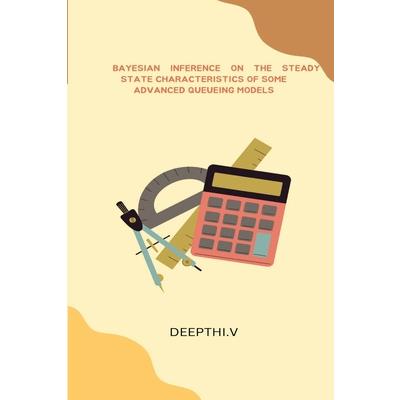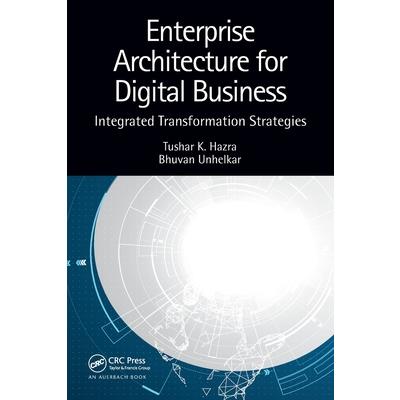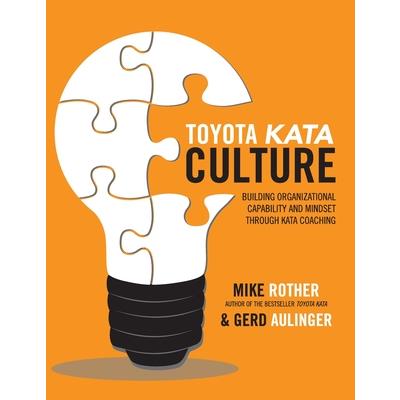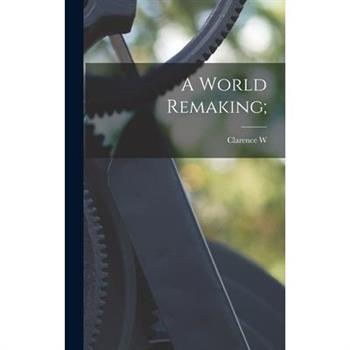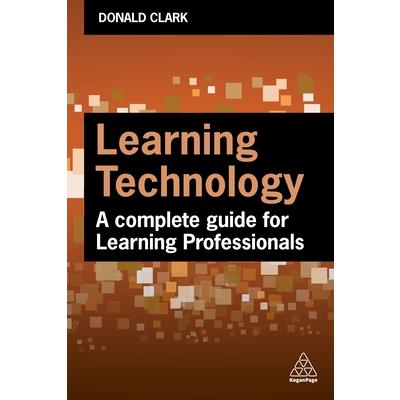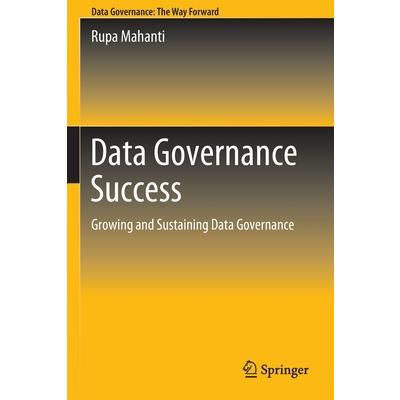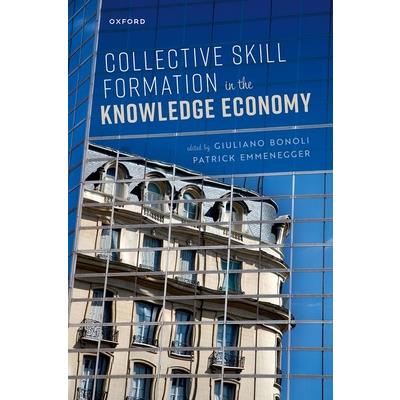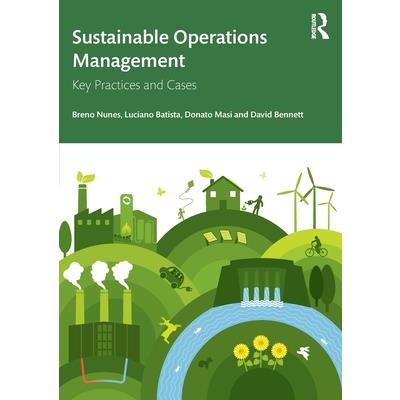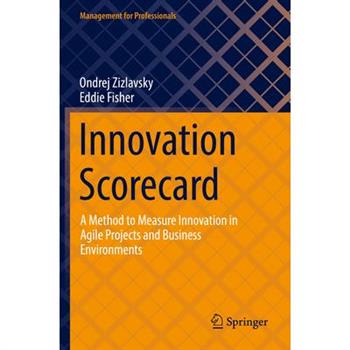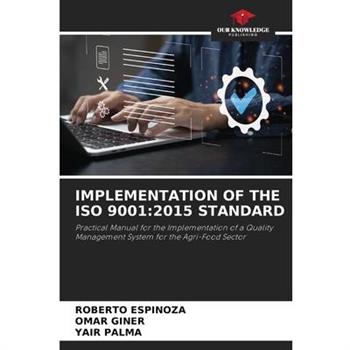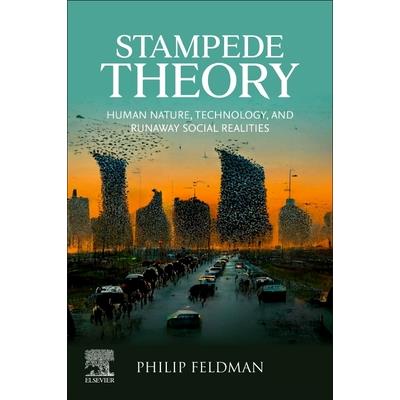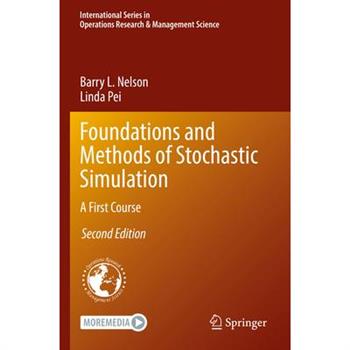Fostering Innovation
While innovation can be defined in many ways, the author sees it as a process. It is not the sudden eureka moment in the middle of the night, nor is it a clear and linear path towards a final destination. Instead, it involves a strong sense of creativity and curiosity. An innovative mind has a natural inclination towards out-of-the-box thinking. It involves a willingness to try something new, without fear or judgment, to develop something no one else has ever articulated. While the mindset comes naturally, it requires fuel to keep it running. Innovators are voracious readers and researchers. They feed their mindset all of the fuel it needs to stay informed and relevant in their field. Many of the same things can be said for the Lean mindset. Lean management doesn't happen overnight, and it is very rarely a clear and linear path to true Lean thinking. Some might consider Lean a subset of innovative thinking, while others see it in reverse. Regardless of the relationship's directionality, one thing is certain: You cannot have one without the other. This book follows John Riley, the CEO of a medium-sized valve company just outside of Pittsburgh, Pennsylvania, who will stop at nothing to create an innovative work environment. Through the ups and downs of his journey, he learns a number of Lean and innovative skills, strategies, and mindsets to help him build the business he's always envisioned for himself. Throughout the book, you see examples of both strong and poor innovative leadership skills demonstrated by each of the main characters. The key messages are ones that help leaders build and access a mindset insistent on continuous improvement. Leadership techniques and abilities that bolster creative thought and problem-solving are the most successful throughout this book. To be truly innovative, you can never stop driving the learning process. For this to happen, leaders need to recognize when there is a need for a change or improvement. This is the beauty of the marriage between Lean and innovation: They both require continuous learning and growth. The desire to improve is only one piece of this equation, however. The other is the willingness to act. Without both of these factors, true innovation will always be out of reach.
Impact of corporate social responsibility on employees performance
Corporate Social Responsibility (CSR) is an ethical and financial contribution of a consortium for its stakeholders for instance employees, buyers, those who invest and community which is local. CSR is helpful in improving the life standard of the people, their families and the communities and provides them the facilities so that they may able to improve their life in a good way. It can be said that it is a continuous moral and financial commitment. It is done by the consortiums in order to make better the life of their employees as well as of the local communities. The main aim of the CSR is to provide a better standard of living by supplying employees with all the basic needs and facilities of life.
Financial Wisdom
The concept of overtaking Elon Musk is quite simple, you may not be as brilliant as he is, and you do not need sound education either to surpass him. All you need is financial wisdom. Therefore, over taking him, require assimilation of all the knowledge acquired through this book added with your personal qualities, which everyone possessed at some point in time of our lives no matter how bad things turn out to revolve around our lives.
Bayesian Inference on the Steady State Characteristics of Some Advanced Queueing Models
Queuing theory is the mathematical study of queuing, or waiting in lines.Queues contain customers such as people, objects, or information. Queuesform when there are limited resources for providing a service. A basic queuingsystem consists of an arrival process (how customers arrive at the queue, howmany customers are present in total), the queue itself, the service process forattending to those customers, and departures from the system. Essentials inmodern life would not be possible without queueing theory.The purpose of this thesis is to address the inferential problems associatedwith various single/multi-server queueing models. It is mainly focused on theestimation of queue parameters like arrival rate, service rate and some importantsteady state queue characteristics such as traffic intensity, expected queuesize, expected system size and expected waiting time. The study of queueingmodel is basically motivated by its use in communication system and computernetworks. The development of an appropriate stochastic models is one of themajor problem associated with the study of communication systems as it requiresmore and more sophistication to manage their complexity. Queueing theory was developed to provide models to predict the behaviorof the systems that attempt to provide service for randomly arising demand.The earliest problems studied were those of telephone traffic congestion. Thepioneer investigator was the Danish mathematician, A. K. Erlang, who, in1909, published "The theory of Probabilities and Telephone Conversations".In later works he observed that a telephone system was generally characterizedby either Poisson input, exponential service times, and multiple servers, or Poisson input, constant service times, and a single channel. Thereare many valuable applications of the theory, most of which have been welldocumented in the literature of probability, operations research, managementscience, and industrial engineering. Some examples are traffic flow (vehicles, aircraft, people, communications), scheduling (patients in hospitals, jobs onmachines, programs on a computer), and facility design (bank, post offices, amusement parks, fast-food restaurants).
Human Resource Information Systems (HRIS) Impact Analysis in the Bangladeshi Industries. Is it fruitful in actualizing competitive strategies?
Master's Thesis from the year 2015 in the subject Business economics - Information Management, grade: 3.92 out of 4.00, University of Dhaka, language: English, abstract: In the modern, fast-paced economy, competition is inevitable for commercial organizations that focus on providing services and products in highly dynamic and uncertain contexts. There has been a significant amount of emphasis on how to provide the best service and the best product possible and how to do so by utilizing Human Resources (HR). This research highlights the competitive strategy concepts and models, competitive advantages from Human Resource Information Systems (HRIS), and the relationship between them that have a major impact on the performance of the business as a whole. In the discipline of HR strategic management, comprehending how HRIS is connected to competitive strategies has emerged as a key research topic. This study's main objective is to establish a connection between competitive strategies and HRIS, as well as the applicability of such a relationship to organizational setting. The study takes into consideration an extensive investigation of the HRIS implementation in contemporary technological-based firms, which employ competitive strategies for operating their business effectively and for accomplishing goal. These strategies significantly affect how HRIS is implemented and how smoothly it operates, and HRIS itself helps to maximize the advantages of these tactics. These systems are never useful for exploiting competitive advantage, except from knowledgeable individuals like analysts. People will perform better and will help achieve both short-term and long-term goals if they are effectively managed and organized. On the other side, bad performance will occur if they are not adequately controlled. This research provides a comprehensive overview of the HRIS used by organizations in Bangladesh that fall under the HR or People and Organization (P&O) division. We are aware that
Enterprise Architecture for Digital Business
Enterprise Architecture (EA) is an essential part of the fabric of a business; however, EA also transcends and transforms technology and moves it into the business space. Therefore, EA needs to be discussed in an integrated, holistic, and comprehensive manner. Only such an integrated approach to EA can provide the foundation for a transformation that readies the business for the myriad enterprise-wide challenges it will face. Highly disruptive technologies such as Big Data, Machine Learning, and Mobile and Cloud Computing require a fine balance between their business and technical aspects as an organization moves forward with its digital transformation. This book focuses on preparing all organizations - large and small - and those wishing to move into them for the impact of leveraging these emerging, disruptive, and innovative technologies within the EA framework.
Healthy Food Delivery
Bachelor Thesis from the year 2022 in the subject Business economics - Operations Research, grade: 1.0, Tongji University, language: English, abstract: In this research, the existing German market, the largest greenfield for online food delivery in the EMEA, is analyzed to verify the possibility of executing a nutritional-conscious business strategy plan in order to differentiate "XX" from the competition. The macro-and microenvironments of Germany's online food delivery business market were examined using a mix of PEST and Porter's five forces models. As a significant outcome of the market investigation, the common characteristics of German nutritional-conscious customers were addressed. Additionally, given the current state of the business, critical components of marketing approaches based on an STP Model are recommended to "XX" in order to solidify its position in this growing industry. Online food delivery has emerged as a rapidly rising trend in the e-commerce market. The development of digital tools has transformed the food industry's perspective. Businesses have redesigned their company strategies in order to stay up with changing client expectations and preferences. Innovation is critical to success in order to stay up with increased client demands and competition in a saturated industry.
Toyota Kata Culture
Take advantage of your organization's brainpower with Kata-driven continuous improvement"This is the first book I have read that provides a clear picture of what it takes to develop and mobilize creative capability across an organization, to achieve challenging goals." Jeffrey K. Liker, author of The Toyota Way (from the Foreword)Nobody drives continuous improvement in real, tangible ways like Toyota, where everyone at every level works toward common, customer-related goals. At Toyota, continuous improvement is habitual. In his groundbreaking book Toyota Kata, Mike Rother revealed management practices that drive Toyota's success in providing value to their customers. Now, Rother and coauthor Gerd Aulinger provide the routines and know-how for scaling these practices across your entire organization. It all builds on five simple foundational questions at every level: What is the target condition?What is the actual condition?What obstacles stand in the way of the target condition?What is the next step? What have you learned from taking that step?Illustrated cover to cover, Toyota Kata Culture helps you visualize exactly how these methods work--so you can start putting them into action right away. You'll learn how to develop your own iterative process of trial and adjustment, build a deliberate, scientific-thinking culture that grows capability, and make aligned strategic continuous improvement part of everyday work. Achieve your goals and differentiate your organization by following the proven formula laid out in Toyota Kata Culture.
A World Remaking;
This work has been selected by scholars as being culturally important, and is part of the knowledge base of civilization as we know it.This work is in the "public domain in the United States of America, and possibly other nations. Within the United States, you may freely copy and distribute this work, as no entity (individual or corporate) has a copyright on the body of the work.Scholars believe, and we concur, that this work is important enough to be preserved, reproduced, and made generally available to the public. We appreciate your support of the preservation process, and thank you for being an important part of keeping this knowledge alive and relevant.
Knowledge Transfer through Artificial Intelligence (A.I.) in Multinational Companies
Diploma Thesis from the year 2009 in the subject Business economics - Information Management, grade: 1, Universities of Applied Sciences Wien (FHWien), language: English, abstract: The subject of this paper is to research and evaluate, the results and the potential of knowledge acquisition through a framework by involving artificial intelligence (in the form of an automated intelligent agent) to acquire and manage intellectual capital for future organizational research and development, availability and competitiveness. Focus of this study is multinational corporations, which are complex knowledge-driven industries, managing their intellectual capital over multiple cultures, locally and globally. Even though codified knowledge and its acquisition is widespread applied, tacit knowledge has showed intangible in its inclusion within the organization's knowledge base. The aim is to determine in which relation or what kind of potential there is to locate in an artificial intelligence approach, in order to obtain the most precious knowledge, which is tacit. Market complexity as well as internal organizational trends and developments have changed the way firms organize their activities locally as well as globally, both in terms of tangible and intangible assets. The dynamics of multinational companies (MNCs) within the markets and their efforts to manage their intellectual capital has become a competitive factor in the present economic globalization. Their competitive advantage is dependent on their employee's expert knowledge, which is mostly tacit. Concomitantly, the exploitation and protection of intellectual property or more also described as assets, as well as how they are being managed, depends a firm's economical future. The science of artificial intelligence aims to attempt not just to comprehend how humans think, but also to construct and design intelligent entities.
Learning Technology
Learning technology is now an integral part of all learning and development activity. Understanding what these technologies are, how they work and their aims is key to successful L&D practice. Learning Technology is written by a leading voice in the learning tech industry. It explains the history of learning tech, its aims and how it is the fundamental technology that has driven learning, culture and progress. This book covers everything from writing to printing, broadcast media, teaching technology as well as detailed discussion of learning management systems (LMSs), learning experience platforms (LXPs) and learning record stores (LRSs). It also highlights the importance of data and analytics and covers the latest developments in the learning technology space including artificial intelligence, virtual reality and the metaverse. Learning Technology helps L&D professionals assess and better understand learning platforms and teaching technologies, both past and present. it supports this by evaluating the benefits of each technology. It also provides insights into the future of work and learning and offers a comprehensive overview and detailed exploration of the topic.
Unforgettable
Unforgettable is the go-to guide for creating unforgettable event experiences.
Data Governance Success
Data Governance- Challenges and Dynamics.- Strategy and Data Governance.- Data Governance Maturity Models.- Data Governance Organization.- Data Governance Metrics.
Collective Skill Formation in the Knowledge Economy
Interest in collective skill formation systems has been high for a long time, but recent structural economic and societal developments have led commentators to question their viability. In particular, the shift towards a knowledge economy creates a number of challenges for these highly praised systems of vocational training. These challenges relate to the growing importance of knowledge intensive production in advanced economies and with the accelerated pace of change due to innovation and globalization. What is more, these issues are compounded by coinciding developments in growing inequality and the emergence of multicultural societies. Can collective skill formation systems adapt fast enough to the needs of the knowledge economy? Can they continue to be as successful as they have been in the past in integrating youth in the labour market? Will employers be willing to participate in the delivery of vocational training in this new context? In this book, a world class team of leading experts on collective skill formation systems provide a thorough discussion of these and other questions raised by the shift to a knowledge economy. The book argues that collective skill formation systems remain attractive for firms and governments. However, continuous and profound adjustments will be needed if they are to fulfil their objectives in terms of equity and efficiency.
Sustainable Operations Management
Sustainable Operations Management applies the issues of sustainability to all strategic decisions of operations: capacity management, supply network, process technology, and development and organisation. This book extends the existing literature of operations management that for years has been paramount in creating economic value with little consideration of environment and social dimensions. Whilst based on robust theoretical frameworks, some developed by its own authors, the book is enriched by international case studies and real-world illustrations throughout, to demonstrate how this theory translates to practice. Each chapter begins with learning objectives and ends with a summary, activity, and questions for discussion. Readers will gain a comprehensive and in-depth knowledge on how to manage operations for sustainability. They will learn the ways to formulate a sustainable operations strategy and the elements involved in managing tactical and operational activities to enhance sustainability performance over time. The book covers all aspects of the new business sustainability paradigm from an operations perspective, including sustainable development goals, the circular economy and digital transformation. With international agreements and national policies in place around themes such as climate change, ocean plastic pollution, loss of biodiversity, water scarcity, and zero landfill targets, this book will be a must for any university abiding to the Principles of Responsible Management Education (PRIME). The text is suitable mostly for MSc and MBA students on sustainable supply chain and operations management modules as well as broader Operations Management courses, but it can also be used for final-year Undergraduate students as part of advanced operations management modules. Online resources include chapter-by-chapter PowerPoint slides and a test bank of questions.
Business Research
This book focuses on research methodologies that apply to business research, particularly for researchers and managers embarking thereon to support managerial decision-making in the industry. In doing so, the book's objective is to guide business researchers in identifying, defining, and applying rigorous academic methodologies that will enable them to formulate, design, and execute effective research that answers their specific management problems. Such guidance can empower organizational managers to understand that business research can contribute to practical solutions to actual problems experienced in the industry. In addition, by emphasizing the integrative nature between (1) academic research and (2) experienced industry problems, it becomes possible to foster an awareness of such research's potential impact on organizational performance management, sustainability, and resilience. With that, attention is given to narrowing the gap between theory and practice, which requires that fundamentals of scientific research be adhered to while maintaining the delicate balance between a practice-friendly guide to pragmatically sound and academically rigorous business research.
Innovation Scorecard
The concept of innovation is not new. It relates closely to the concept of change. Both are inevitable in today's and tomorrow's business environments. Standing still and hoping for the best is no longer a viable option. Innovation, by itself, is not a panacea for positive accomplishments. Of paramount importance to any business is how successful any innovation has actually been. This book brings together the knowledge, learning and experience from the author's practical applications of a newly developed and implemented Innovation Scorecard methodology to close exactly this shortfall. Their 'one stop shop' methodology is a complete end to end approach on how to measure the success of any innovation, irrespective of whether this relates to projects or business as usual work environments. This landmark methodology will provide the reader with an applied proof of concept across a range of business applications and a complete end to end process how to measure success including templates and worked examples. The book offers a starter-pack with suggested performance metrics to get the reader on the road to measuring the success of innovation and to encourage readers to develop how they view and feel about measuring the success of innovation. Furthermore, the book provides the reader with everything they need to know, ranging from a simple to follow user-friendly process to the application of suggested performance metrics and how to apply these in any business work environment, which is a requisite for creating a working environment within the reader's organisation where innovation and forward-thinking are both encouraged and supported.
The German Supply Chain Act and its Economic Impacts
Seminar paper from the year 2022 in the subject Business economics - Supply, Production, Logistics, grade: 1,3, University of applied sciences, Cologne, language: English, abstract: The previous administration in Germany passed the German supply chain due diligence law known as "das Lieferkettengesetz'" in June 2021. Now, what does this mean and what impact does it have on the supply chain processes of companies located in and outside Germany? The reason why the German parliament known as "Bundestag" passed this law will be addressed in full details. Supply chain can be understood as a channel of distribution beginning with supplier of raw materials, components needed to assemble goods, this extends to the manufacturing processes, the distribution, and the retail and finally to the final consumer, with the primary goal of creating high level of competitive advantage. The popular definition of supply chain is that it is a set up approaches utilized to efficiently integrate suppliers, manufactures, warehouses and stores, to enhance the production and distribution of merchandise at the right quantities and the right location and right time. The purpose is to minimize costs and satisfy service-level requirements.
Processing and Storage of Amchur
The book "Processing and Storage of Amchur" includes various chapters as introduction, review, material and methods, experimental results, discussion and summary which provide all information in capsule form pertaining processing and storage of Amchur. Amchur is a dehydrated product made from unripe mangoes. Traditionally Amchur is an "Indian spice" made from unripe green mangoes; are cut into slices, sun-dried and pounded into powder. Amchur is prepared on large scale in tribal area of satpuda hills in Nandurbar district of Maharashtra. Amchur provides an excellent outlet for the economic utilization of fallen, marketable surplus unripe green fruits under climate resilience. Moreover there is no risk of stealing of fruits by stress passers, pedestrians and thieves. Within a very short period income is generated from amchur alongwith generation of employment in rural tribal community in the villages. The book will be not only useful to undergraduate and post graduate students of the different agricultural and horticultural universities but also for the professionals, who are actively engaged in the business of amchur as well unripe raw mango processing industry entrepreneurs.
The Innovation Killer
Companies and teams rely on what we know and the way we do things here to speed decision making and maintain a sense of order. But progress demands change, risk taking, and occasionally, revolution. Processes must be overhauled, assumptions challenged, taboos broken.But how do you do it? Who among the group will take responsibility for a brand-new initiative or unorthodox decision? Who will be willing to stand up and say, in essence, that the emperor has no clothes? As much as we laud the concept of "thinking outside of the box," most of us think it's a lot safer to stay inside.It's time to call in a zero-gravity thinker who is not weighed down by the twin innovation killers -- GroupThink and its close cousin, ExpertThink. According to The Innovation Killer, the right zero gravity thinker will ideally possess the following traits: Psychological distance: the most important tool of the impartial observer, it enables him or her to maintain an open mind.Renaissance tendencies: a wide range of interests, experiences, and influences more readily inspires innovative approaches.Related expertise: strength in a relevant area may lead to intersection points at which solutions are often found.This book helps identify when and why you should call in a collaborator, where to find one, and how you and your team can start working with him or her. There are also strategies for turning yourself into a zero-gravity thinker when it's simply not practical to bring in a true outsider.Knowledge is good, except when it trumps real innovation. Whether your team is too focused on the forest or can't see past the trees, this book will help you add the perspective you need to make the great decisions that will move your company forward.
Implementation of the ISO 9001
The purpose of this Manual is to provide practical guidance to all those who wish to implement a Quality Management System and, of course, to obtain ISO 9001 Certification or other Certifications demanded by the market.The Manual is a detailed guide of the steps to follow through all the stages of the process from the analysis of the current situation to the Certification of the company, mainly oriented to companies in the agri-food sector.Backed with the experience of having participated repeatedly in the National Agri-Food Award as an advisor in several large companies in Mexico.We have also participated in the National Quality Award, as well as in the Best Mexican Companies Award.
Sequential Decision Analytics and Modeling
Sequential decision problems arise in virtually every human process. They span finance, energy, transportation, health, e-commerce, and supply chains and include pure learning problems that arise in laboratory or field experiments. They even cover search algorithms to maximize uncertain functions. An important dimension of every problem setting is the need to make decisions in the presence of different forms of uncertainty and evolving information processes.Warren B. Powell's work in sequential decision problems started in the 1980s and spanned rail, energy, health, finance, e-commerce, supply chain management, and even learning for materials science. His work on a wide range of problems highlighted the importance of using a variety of methods. In the process, he came to realize that any sequential decision problem can be modeled using a single universal framework that involves searching over methods for making decisions.The goal of this book is to enable readers to understand how to approach, model and solve a sequential decision problem. To that end, it uses a teach-by-example style to illustrate a modeling framework that can represent any sequential decision problem. It tackles the challenge of designing methods, called policies, for making decisions and describes four classes of policies that are universal in that they span any method that might be used; whether from the academic literature or heuristics used in practice. While this does not mean that every problem can be solved immediately, the framework helps avoid the tendency in the academic literature of focusing on narrow classes of methods.
Stampede Theory
Stampede Theory: Human Nature, Technology, and Runaway Social Realities explores the biological, evolutionary and technological systems that drive troubling patterns of behavior among groups while also proposing actions to combat harm. The book discusses different ways that living beings coordinate and how the emergence of communication technologies has changed behaviors. As the problem of echo chambers and misinformation grows, it is crucial to understand underlying causes and provide solutions--this book does just that by pulling from multiple fields to produce a coherent story about how social realities are created and how they can create resilient communities or reinforce damaging beliefs. This interdisciplinary approach rests on three primary pillars: 1) How information systems affect the distribution of ideas, information, influence and belief; 2. Technology-mediated communication between individuals and groups, from stories pressed into clay tablets to "likes" on social media; 3) The sociology of behavioral bias in groups ranging from teams to nations. Because of its interdisciplinary foundations, the book includes chapters that address behavioral economics, cults, artificial intelligence, and the individual psychology of belief. This will be a valuable resource for a range of readers, from political and social scientists to decision-makers in government and business, scientists in the fields of machine learning and AI, and more.
Foreign Capital as an Instrument of National Economic Policy
Imperialism and World Economy
This work has been selected by scholars as being culturally important, and is part of the knowledge base of civilization as we know it.This work is in the "public domain in the United States of America, and possibly other nations. Within the United States, you may freely copy and distribute this work, as no entity (individual or corporate) has a copyright on the body of the work.Scholars believe, and we concur, that this work is important enough to be preserved, reproduced, and made generally available to the public. We appreciate your support of the preservation process, and thank you for being an important part of keeping this knowledge alive and relevant.
Time-Block Planner
This Time Block Planner is designed to help you effectively manage your time and increase your productivity. It is a simple, yet powerful tool that can be used by anyone who wants to get more out of their day. It is based on the principle of time blocking, which is a time management technique that involves dividing your day into blocks of time dedicated to specific activities. For example, you may block off an hour for breakfast, two hours for work, and one hour for lunch. This technique is effective because it helps you to focus on one task at a time and eliminates distractions. By using the Time Block Planner, you will be able to increase your productivity and get more out of your day. How to Use the Time Block Planner? Using the Time Block Planner is simple. First, you need to decide what activities you want to block off time for. Once you have decided on your activities, you will need to estimate how long each activity will take. After you have estimated the time for each activity, you will need to block off time in your day for each activity. Once you have blocked off time for each activity, you need to stick to your plan and not allow any distractions. If you find that you are having trouble sticking to your plan, you may want to set a timer for each activity. This will help you to focus on the task at hand and not allow any distractions. The Time Block Planner is a flexible tool that can be used by anyone who wants to increase their productivity. You can use it to block off time for any activity, such as work, study, exercise, or even relaxation. Benefits of Using the Time Block Planner There are many benefits to using the Time Block Planner. Some of the most notable benefits include: Increased productivity: By using the Time Block Planner, you will be able to increase your productivity and get more out of your day. Improved time management: The Time Block Planner can help you to better manage your time and get more done in less time. Reduced stress: The Time Block Planner can help to reduce stress by helping you to focus on one task at a time. Greater clarity: The Time Block Planner can help you to gain clarity on your goals and objectives. Better focus: The Time Block Planner can help you to stay focused on your tasks and not allow any distractions.
Methodology for Digital Transformation
This book focuses on why and how to achieve digital transformation for enterprises and organizations by introducing cases in China. Its purpose is to highlight the importance and improve the understanding for digital transformation and related issues, like human resource allocation, and how to improve the efficiency and success rate in a low-cost and low-risk way. In this way, the cases in the book avoid the most common traps during the digital transformation process, enabling R&D and business personnel, and data practitioners in the organization to figure out the implementation and processes involved, and hence better understand how to work with senior management team when implementing the transition plan. The middle and senior level managers such as company executives, presidents in banks and universities, and officials in government, are also the target audience.
Improving America’s Schools Together
Improving America's Schools Together: How District-University Partnerships and Continuous Improvement Can Transform Education is the first definitive text on continuous improvement in school district-university partnerships, covering improvement methods, theory, research, and real cases across the United States with practical improvement tools that can be adapted to any setting. Through an array of in-depth stories, this book demonstrates how improvement science--as a shared method--can help universities, districts, and schools foster leaders and educators and enhance students' learning and opportunities.
Innovation and Dynamic Capabilities
This publication deals with the conceptualization of innovation as one of the key capabilities of the organisation.Author propose that the innovation management practices should appropriate the organisational capabilities to achieve competitive advantage in the business environment.
Sustainable Self-Governance in Businesses and Society
Sustainable Self-Governance in Businesses and Society offers a sound introduction to Stafford Beer's Viable System Model (VSM) and clarifies its relevance to support organisational sustainability and self-governance. While the VSM has been known since the early 1980s, it hasn't been always easy to understand and to apply. It explains the self-transformation methodology to analyse the way organisations manage (or not) their complexity and govern themselves. The work is supported by multiple examples of application in organisations of all scales - from small to multi-national corporations and from organised social networks to communities and national organisations. It clarifies the relevance of Beer's theory to support systemic learning and change in organisations, and to coach them to self-organise and self-govern. Readers interested in further understanding insights from complex systems and cybernetics theories for designing and transforming organisations will benefit from this book, as it works to offer very detailed insights on how to put the VSM theory into practice. It clarifies how it improves adaptive capabilities, agile and self-regulated structures, more capable of fully implementing corporate sustainability strategies and self-governing themselves. The chapters provide key reading for managers, consultants, practitioners, and post-graduate students working in organisational transformation, governance, and sustainability.
How To Make Quality Decisions
Decision making for anybody could mean a life or death situation. For managers, professionals, and organizations, it could result in value-added or value removed. Knowing how to make good decisions is a competency indicator for professionals and managers, as well as a performance measure for organizations. However, it is the attempt to conceive decision realities as they truly exist that has influenced people who make decisions every day to seek to understand how to make impacting quality decisions. Based on research, theory, and best practice this book is written to help professionals, managers, leaders, and people in positions of responsibility overcome challenges in making quality decisions while taking ownership of their decision making processes. Discover the ramifications, processes, techniques, models, strategies, and benefits of decision making, and even your own decision-making style.
Foundations and Methods of Stochastic Simulation
This graduate-level textbook covers modelling, programming and analysis of stochastic computer simulation experiments, including the mathematical and statistical foundations of simulation and why it works. The book is rigorous and complete, but concise and accessible, providing all necessary background material. Object-oriented programming of simulations is illustrated in Python, while the majority of the book is programming language independent. In addition to covering the foundations of simulation and simulation programming for applications, the text prepares readers to use simulation in their research. A solutions manual for end-of-chapter exercises is available for instructors.
Landwirtschaft, Industrie und Handwerk, Oder, die Vereinigung Von Industrie und Landwirtschaft, Von
This work has been selected by scholars as being culturally important, and is part of the knowledge base of civilization as we know it.This work is in the "public domain in the United States of America, and possibly other nations. Within the United States, you may freely copy and distribute this work, as no entity (individual or corporate) has a copyright on the body of the work.Scholars believe, and we concur, that this work is important enough to be preserved, reproduced, and made generally available to the public. We appreciate your support of the preservation process, and thank you for being an important part of keeping this knowledge alive and relevant.
DevOps Leadership - Steps For the Introduction and Implementation of DevOps
DevOps is on everyone's lips. It is often presented in a very technical way, whether in terms of the methods and frameworks to be used or in terms of techniques and development frameworks. Martin J. Adams is a proven expert on agile approaches, especially on the topics of ""leadership"" and ""organizational development"". In this volume, he presents the most important methods in the context of DevOps and the resulting measures and methods for leaders who want to support their teams in being successful with DevOps and thus make a valuable contribution to the success of the company.
Modeling and Simulating Complex Business Perceptions
Chapter 1. Introduction.- Chapter 2. Data Analysis.- Chapter 3. Fuzzy Cognitive Maps.- Chapter 4. Data Modeling.- Chapter 5. Network analysis, accuracy and stability of the job-satisfaction structures.- Chapter 6. The proposed data-driven glassoFCM method.- Chapter 7. Thesis Conclusions.
Information Systems Analysis and Design (2nd Edition)
Information Systems Analysis and Design presents essential knowledge about management information systems development. It is used for four-year university and college students who study information systems analysis and design. Students will learn the information systems development strategies and the process of information systems development. The book emphasizes the key methods of information systems acquisition development, including business process modeling and systems acquisition design. To maintain a well-rounded approach to the topic, both fundamental knowledge about information systems development and hands-on materials are presented. Succinct tutorials for professional systems development project are also included.
Ennobling Business for Success
The soul of an organization is the character of that organization. From that organizational character stems the behaviors, values, and actions that drives the organizational economic engine. Since excellence is a habit demonstrated by consistent behavior, the human capital attraction and development becomes the new frontier of organizational excellence.Ennobling Business for Success provides a blueprint for organizations to understand and flip the script on the great resignation, pivot it into the great business mindfulness opportunity, and embrace the three core values propagated by the Ennobled for Success (TM) Institute: Inspire the human spirit so each soul feels valued and could live its full potential.Ignite the sense of purpose to mindfully build a fulfilling life.Influence by design to thrive and leave a legacy of ennobling.The insights and lived experiences of 14 international professionals and authors are featured as a roadmap for organizational transformation at this pivotal time.We have the opportunity to leave the business world and modern capitalism better than we found it. I invite you to come aboard to take the co-creative transformational ride of our generation! A ride of our shared purpose. A ride of our shared humanity. A ride of our shared happiness.
Successful Innovation Systems
Part I: Introducing the Framework.- 1. Launch Pad.- 2. Human Capital.- 3. Finance Capital, Market, and Policy.- 4. Infrastructure and Institutions.- 5. Management of Resources and Lessons Learned.- Part II: Learning from Successful Innovation Regions.- 6. Bangalore Innovation System.- 7. Berlin Innovation System.- 8. Medell穩n Innovation System.- 9. Moscow Innovation System.- 10. Nairobi Innovation System.- 11. New York Innovation System.- 12. Shanghai Innovation System.- 13. Shenzhen Innovation System.- 14. Silicon Valley Innovation System.- 15. Sofia Innovation System.- 16. Tel Aviv Innovation System.- 17. Zurich Innovation System.
The Computer Self-Efficacy Construct
Computer self-efficacy (CSE) has captured the interest of researchers from widely diverse knowledge domains for over four decades. During that time, the realm of computer adoption and use has evolved and flourished. Along with this evolution, our understanding of CSE, its utility in behavior modeling and training development, and its relationship to a diverse array of antecedents and precedents has continued to evolve. This monograph provides a comprehensive history of the CSE construct as it has been developed and applied within the field of information systems (IS), and within the broader academic communities that benefit from reference to IS research contributions. The authors present the breadth and depth of the CSE construct and offer a framework of extant knowledge and implications for future research within this knowledge domain. The principal contribution of this work is the assemblage of the bulk of the authors' understanding and knowledge regarding the CSE construct and its associated streams of research into a single compendium. It is intended to facilitate future researchers to access the current thinking regarding the CSE construct and direct their efforts to the continued advancement of our understanding of computer self-efficacy.
Creativity in the Design Process
The book provides an open and integrated view of creativity in the 21st century, merging theories and case studies from design, psychology, sociology, computer science and human-computer interaction, while benefitting from a continuous dialogue within a network of experts in these fields. An exploratory journey guides the reader through the major social, human, and technological changes that influence human creative abilities, highlighting the fundamental factors that need to be stimulated for creative empowerment in the digital era. The book reflects on why and how design practice and design research should explore digital creativity, and promote the empowerment of creativity, presenting two flexible tools specifically developed to observe the influences on multiple level of human creativity in the digital transition, and understand their positive and negative effect on the creative design process. An overview of the main influences and opportunities collected by adopting the two tools are presented with guidelines to design actions to empower the process for innovation.









